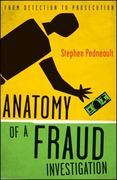Question
Econ 1032Introduction to Macroeconomics Assignment no. 1Practice Questions for Mid-Term Due: Sat Oct 23/2021 ( Mid-Term Exam is on Tues Oct. 19/2021 ) Chapter 1
Econ 1032Introduction to Macroeconomics
Assignment no. 1Practice Questions for Mid-Term
Due: Sat Oct 23/2021 (Mid-Term Exam is on Tues Oct. 19/2021)
Chapter 1 questions---Three ways in which Economists think and Introduction to Economic Models
1 (a) Briefly explain why Economics is called the 'Science of Choice."
Economics is a choice science since it aids in the effective and efficient use of scarce resources. Economics teaches us how to use resources in a cost-effective manner that does not hurt other members of society.
(b) List the three ways in which economists think. How does each way of thinking help to explain the concept of "Choice"?
Three ways in which economics think are
Scarcity, choice, and opportunity costdescribes the ramifications (or outcomes) of making a decision.
Rational behaviordescribes the rationale for the decision (why the choice was made)
Incentives and marginal analysisdescribe how a decision is determined (the process of making a choice)
2) What is the meant by the term "Scarcity"?
Scarcity refers to the belief that human material desires outnumber the resources available to satisfy those desires. That is, desires outnumber available resources.
3) (a) Draw a diagram of the trade-off between labor (working time) and leisure (time spent not working). Assume that out of the 24 hours per day, you sleep 8 hours.
(b) What is your opportunity cost for each hour that you spend working?
4) Entrepreneurs such as Bill Gates, Martha Stewart and Mark Zuckerberg have access to large amounts of money. Do you think these individuals ever face the basic economic problem of "scarcity"? Explain...
5) Anita recently received $5000 as an inheritance and she is considering three possible ways of spending her money:
(a) Purchasing a used car, (b) Taking a trip to Africa or (c) Investing the entire sum in a Registered Retirement Savings Plan (RRSP)
See next page for questions:
Questions:
- If Anita decides to take the trip, what is her accounting cost? What is her opportunity cost?
- Suppose, instead, that Anita's first choice is to buy the used car, but (c) is her second choice and (b) is her third choice. What is her opportunity cost of purchasing the used car? Explain...
6) Suppose you are currently renting a one-bedroom apartment in Toronto for $1500 per month. You've been saving up for a down payment on a condo. If you buy a condo, you'll have to pay property tax, monthly condo fees (for building services) and monthly mortgage payments. You will, however, own your own condo.
Question:
Use marginal analysis to decide whether you would continue renting or buy the condo. Explain some of the marginal benefits and marginal costs you would face...
7) (a) Briefly distinguish between a positive relationship and an inverse relationship.
(b) Consider each of the following pairs of variables. Determine the relationship between the two variables:
(i) Gas prices and airline ticket fares (prices)
(ii) Lecture time and attention span
- Costs of production and business profits
- Price of Tim Hortons' coffee and the Cost of coffee beans
Chapter 3Demand/Supply Questions
- What are the two key assumptions made by economists in developing the Demand/Supply Model?
- Use diagrams and a written explanation to distinguish between a "change in quantity demanded" and a "change in demand"
- Consider the following demand/supply schedules for peaches in Ontario, Canada:
Price (P).......................Quantity demanded.................Quantity supplied......Shortage/Surplus
($/pound) (Pounds/week) (Pounds/week)
$1.00...............................5000............................................1400
1.50...............................4500...........................................2000
2.00...............................4000...........................................2700
2.50...............................3500...........................................3500
3.00...............................3000...........................................4400
3.50...............................2500...........................................5400
4.00...............................2000...........................................6500
Questions:
- Draw a diagram of the market for peaches and determine the equilibrium price (Pe) and equilibrium quantity (Qe).
- Suppose that the grocery stores initially decide to charge $3.50/pound for peaches. Is there a shortage or surplus of peaches at this price? Explain. How will the price and quantity of peaches adjust as a result?
- Explain how each of the following changes will affect the market for peaches. Draw a separate diagram for each change and explain the effect on equilibrium price and quantity...
- There is a decrease in the price of peaches (all else equal)
- There is a decrease in the price of plums, a substitute in consumption for peaches (all else equal)
- A new machine has been invented that allows farmers to harvest peaches more quickly (all else equal)
- There is an increase in the price of fertilizer, used to grow peaches (all else equal)
- A hurricane destroys peach crops in Florida (all else equal)
- Distinguish between each of the following terms:
- Normal and Inferior goods
- Substitutes and Complements
- Distinguish between the Substitution Effect and Income Effect of a price change. Provide an example of each...
- Suppose good X is an inferior good and there's an increase in income. There is also a change in the supply of good X and an economist notices that the equilibrium price of X falls.
Question: Which way did the supply curve for good X shift? Show a diagram
Step by Step Solution
There are 3 Steps involved in it
Step: 1

Get Instant Access to Expert-Tailored Solutions
See step-by-step solutions with expert insights and AI powered tools for academic success
Step: 2

Step: 3

Ace Your Homework with AI
Get the answers you need in no time with our AI-driven, step-by-step assistance
Get Started


